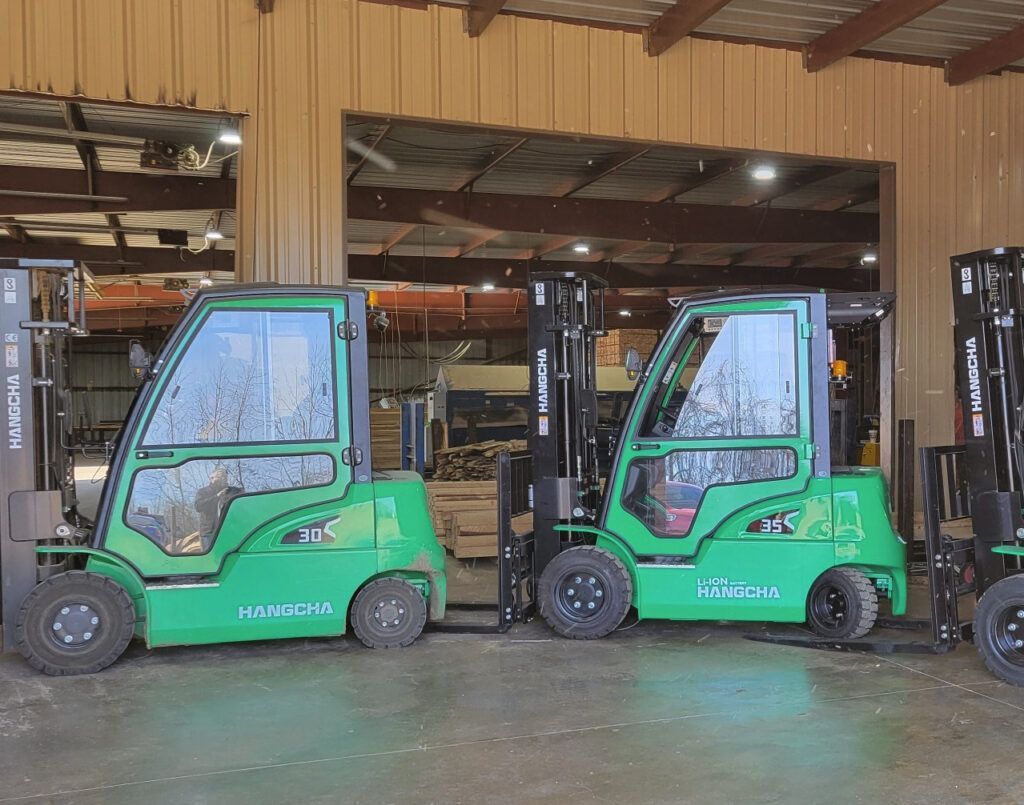Holiday Season Warehouse Survival Tips
The holiday season is upon us, meaning busy weeks lie ahead for retail businesses and warehouse operations. Not only are sales driving forward, but flu season is ramping up, weather changes disrupt logistics, and scheduling employees around travel can be complex.
The holiday season can be a season of chaos without proper planning and contingency plans in place. This blog will review some holiday warehouse survival tips to get you through the season.
Equipment Maintenance & Inspection
Before the holiday rush peaks, ensure all your warehouse equipment, from forklifts to scissor lifts, undergoes rigorous inspections and maintenance. Well-maintained equipment is the backbone of smooth warehouse operations during the holiday season.
Safety Protocol Reinforcement
With the influx of temporary staff and increased pressure, reinforcing safety protocols becomes even more critical. Conduct regular safety training sessions to remind your workforce of the importance of adhering to safety guidelines during this busy period.
Sufficient Supply Stock
The last thing you want during the holiday rush is a need for more essential warehouse materials. Ensure you have an ample supply of pallets, shrink wraps, and packaging materials to meet the increasing demands of the season.
Warehouse Layout Optimization
To maximize efficiency and streamline workflows, consider reorganizing your warehouse layout to accommodate the surge in inventory and minimize congestion during the holiday rush. A well-optimized warehouse layout can significantly enhance your overall operational efficiency.
Staffing Increases
Prepare for the holiday rush by hiring additional temporary staff to manage the increased workload. Ensure these new team members are well-trained and equipped to handle the season’s demands efficiently.
Prioritize Cleanliness
A clean and organized warehouse is essential for efficient operations. Implement strict cleaning schedules for sweepers, scrubbers, and other cleaning equipment to maintain a clean, clutter-free workspace.

Temperature Control Management
With the fluctuating temperatures outside, it’s crucial to maintain stable temperatures within your warehouse. Regularly monitor and maintain the HVAC systems and industrial fans to ensure a comfortable environment for your staff and the product.
Emergency Preparedness Plan
Prepare for the unexpected by developing a comprehensive emergency response plan. Communicate this plan to your team, ensuring everyone knows their roles and responsibilities in case of unforeseen events such as power outages or equipment breakdowns.
Customer Service Excellence
During the holiday rush, providing exceptional customer service is paramount. Train your staff to handle customer inquiries and resolve issues promptly, ensuring your clients’ seamless and satisfactory experience. Ensure your phones are staffed adequately with designated staff members who can respond to emails or online chats from customers.
Inventory Management and Restocking
Monitor your inventory closely and plan for timely restocking to prevent potential stockouts during the busy season. Efficient inventory management is crucial for ensuring smooth order processing and timely deliveries.
The holiday warehouse rush can be exhilarating yet challenging for warehouse owners and managers. Following these ten essential tips ensures that your warehouse survives and thrives during this bustling season.

Work With Benco Industrial
Meticulous planning, efficient operations, and excellent customer service are critical for a successful and stress-free holiday season.
Our Benco Industrial team is ready to help your warehouse get the best equipment for the holiday season and all year round. Whether you’re looking to rent or buy, we have many options and team members ready to help you choose the best fit for your situation. We’ve got everything from task forklifts to electric forklifts to industrial fans to shelving.
Get in touch with us today!
The post Holiday Season Warehouse Survival Tips appeared first on Benco Industrial Equipment.




